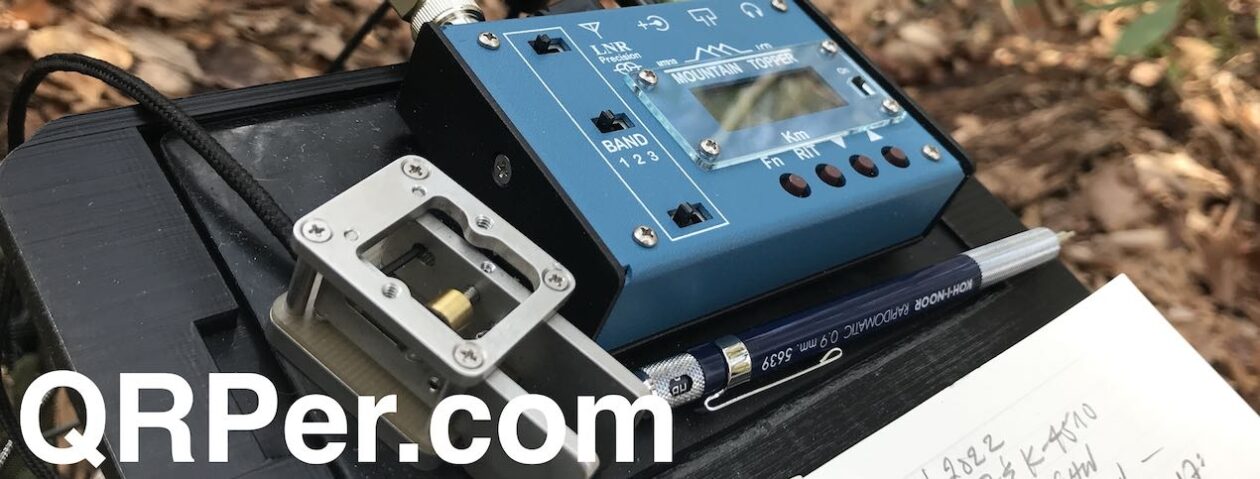 Last year (May, 2022), Xiegu announced a new compact field radio that would be added to their line of transceivers: the Xiegu G106.
Last year (May, 2022), Xiegu announced a new compact field radio that would be added to their line of transceivers: the Xiegu G106.
As I was capping off my summer in Canada (August, 2022), Radioddity started shipping the G106. Radioddity had me on their list of folks to send a loaner G106 to, but I didn’t have time to even look at the radio I was so busy upon my return, so didn’t immediately request it.
I did watch, however, K8MRD’s initial review and updated review of the G106. It was less than stellar [understatement alert!] but more than relevant to me because Mike shipped his second unit to me on behalf of Radioddity.
I connected that G106 to a dummy load, checked the transmitted signal, and it simply didn’t look very clean. It looked worse than it did when Mike checked it only a couple weeks prior.
I shared my results with Radioddity, told them I didn’t feel comfortable putting it on the air for testing in the field, and they asked to have that unit returned and checked out.
Updated G106
 Fast-forward to January 2023 when I was once again contacted by Radioddity to see if I would like to field test an updated G106. I was happy to do so, in fact, because I was curious if the whole G106 experience had improved.
Fast-forward to January 2023 when I was once again contacted by Radioddity to see if I would like to field test an updated G106. I was happy to do so, in fact, because I was curious if the whole G106 experience had improved.
In the spirit of full disclosure: keep in mind that Radioddity is a Xiegu retailer/distributor–they are not the manufacturer nor are they owned by Xiegu. They are a sponsor of QRPer.com, but have no say in what I post nor any sort of editorial input. Indeed, this is always a condition of sponsorship from day one.
To Radioddity’s credit, some of my most critical reviews have been of products they’ve sent me on loan (especially the GSOC). They take criticism on the chin and keep on moving forward. This is why they are still a sponsor and I like working with them. They understand that I call it like it is and stand by what I publish.
This G106 has been sent to me on loan for a few weeks to review. I plan to take this unit on a number of activations and pair it with a variety of antennas and accessories.
Very early impressions
 I will eventually publish a full review of the G106 (likely in The Spectrum Monitor magazine first) once I’ve put in a lot more field and shack hours with the G106. In the activation video, below, I do make a lot of comments about the radio–thinking out-loud–so if you’re considering purchasing the G106, you might at least listen to a few of my initial impressions.
I will eventually publish a full review of the G106 (likely in The Spectrum Monitor magazine first) once I’ve put in a lot more field and shack hours with the G106. In the activation video, below, I do make a lot of comments about the radio–thinking out-loud–so if you’re considering purchasing the G106, you might at least listen to a few of my initial impressions.
I will say this: for a modern SDR-based transceiver, it’s pretty bare-bones. It lacks a number of features I assumed it might have despite the incredibly affordable $320 US price point:
- No SWR meter
- No Power meter
- No CW or Voice message memories
- No RF gain control
- No AGC control
- No dedicated headphone audio output
But, again, it has more features than many of the bare-bones CW-only QRP transceivers out there, so for the price perhaps expectations should simply be in check–?
Zebulon B. Vance Birthplace (K-6856)
 On Tuesday, January 31, 2023, I took the G106 on its maiden POTA activation to K-6856.
On Tuesday, January 31, 2023, I took the G106 on its maiden POTA activation to K-6856.

The G106 doesn’t have a built-in ATU (which I would never expect at this price point) so I decided to pair it with a resonant antenna. Since it was a very rainy day and the area/ground where I tend to deploy my wire antennas at Vance was squishy and soft, I opted to deploy my Chelegance MC-750 next to the picnic shelter. Continue reading Taking the Xiegu G106 on its maiden POTA activation! →
 Welcome to my first Postcard Field Report!
Welcome to my first Postcard Field Report! Thursday, February 2, 2023, was a rainy, dreary day so the perfect time to play a little POTA, right? I made time in my morning to visit Lake James State Park (K-2739).
Thursday, February 2, 2023, was a rainy, dreary day so the perfect time to play a little POTA, right? I made time in my morning to visit Lake James State Park (K-2739).
 When I arrived at the Catawba River Access, the parking lot was empty. Not too surprising considering it was a Thursday morning on a chilly, rainy day.
When I arrived at the Catawba River Access, the parking lot was empty. Not too surprising considering it was a Thursday morning on a chilly, rainy day. Of course, I had the picnic shelter all to myself, so why not use it to stay dry? Continue reading Postcard Field Report: Pairing the Mission RGO One with the Elecraft AX1 at Lake James for some QRP DX
Of course, I had the picnic shelter all to myself, so why not use it to stay dry? Continue reading Postcard Field Report: Pairing the Mission RGO One with the Elecraft AX1 at Lake James for some QRP DX 






























